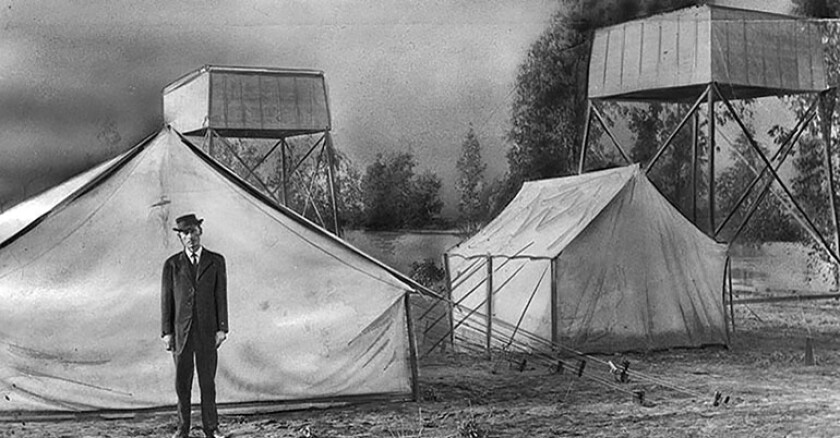The Original Rainmaker
In the early 1900s, Charles Mallory Hatfield was hired to cure California's drought.

Los Angeles Public Library Photo Collection
There was a time in Southern California when if cities needed water, they hired Charles Mallory Hatfield, also known as the “Rainmaker.” Hatfield made a living in the early 1900s going from town to town during dry spells, claiming he could end the drought. The former sewing machine salesman would turn up with a cauldron and a cocktail of 23 chemicals -- a recipe he took to his grave -- that he said, when boiled, would evaporate into the clouds above and induce rain. “I do not make rain,” Hatfield wrote. “That would be an absurd claim. I merely attract the clouds and they do the rest.” In the end, it wasn’t that Hatfield failed to produce rain, it was that he “produced” too much of it. In 1915, Hatfield was hired by San Diego, which was in the midst of a horrible drought. He was asked to generate a steady stream of rain over the next year. Instead, a terrible storm hit in January 1916 that caused massive flooding and killed at least 20 people. Hatfield’s life story became the basis for The Rainmaker, a Broadway play and, later, a 1956 film starring Burt Lancaster. These days, it’s actually still fairly common for governments to hire rainmakers. Cloud seeders, as they are known today, spray water-packed clouds with silver iodide crystals in the hopes of making it rain.








